

|
Bob's Shop Notes: |
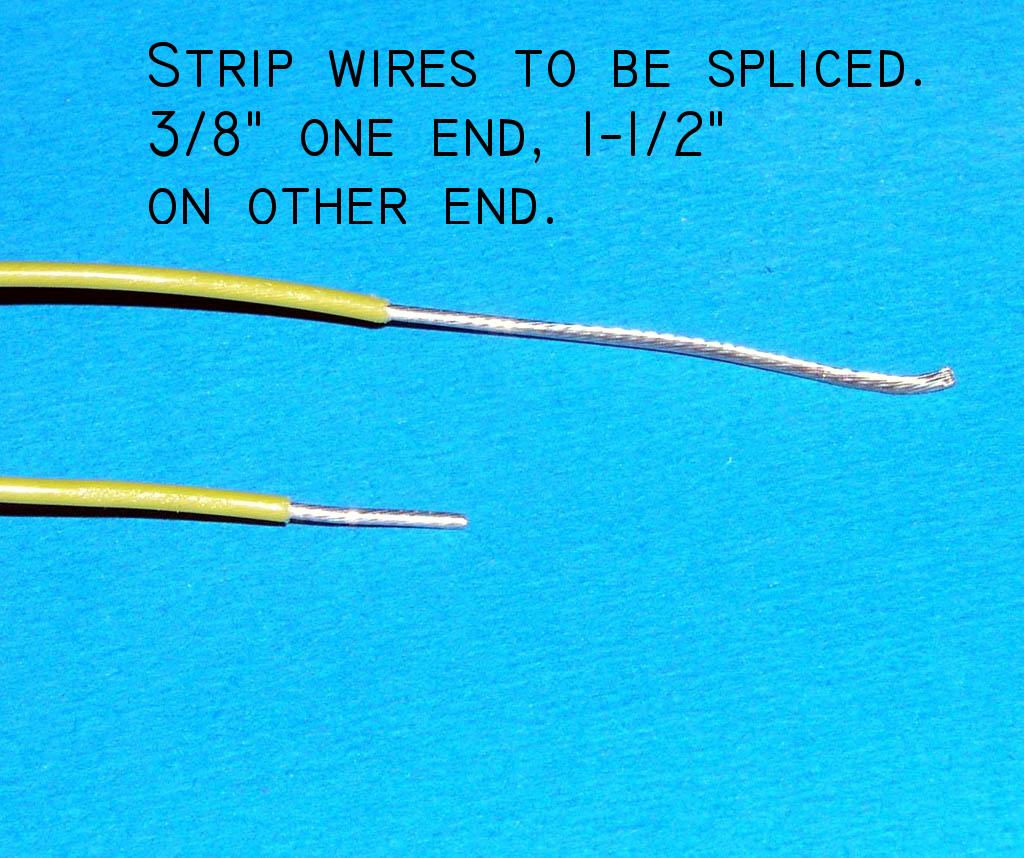
|
Step 1 . . .Tools needed: (1) A soldering iron with a 1/16 to 3/16" tip . . . wattage not terribly critical but it needs to be hot enough to melt the tip of a strand of solder in one second or so. 40W is certainly enough, many 25W irons will do. We're looking for a 650+ degree iron. (2) Heat gun to finish the joints with heatshrink. (3) Wire cutters and strippers. Materials needed: (1) 63/37 alloy, 0.032" or similar small size solder. I like Kester Resin 44 but there are several good ones. (2) Heat shrink tubing. Getting Started:Prepare the ends wires by stripping off 3/8" insulation from one end, 1-1/2" from the other end.
|
Step 2 . . .Separate out 2 or 3 strands of wire from the long stripped end . . . unwinding them down to the insulation and bend them aside as shown here. Cut remaining strands back to 3/8" of exposed wire. |
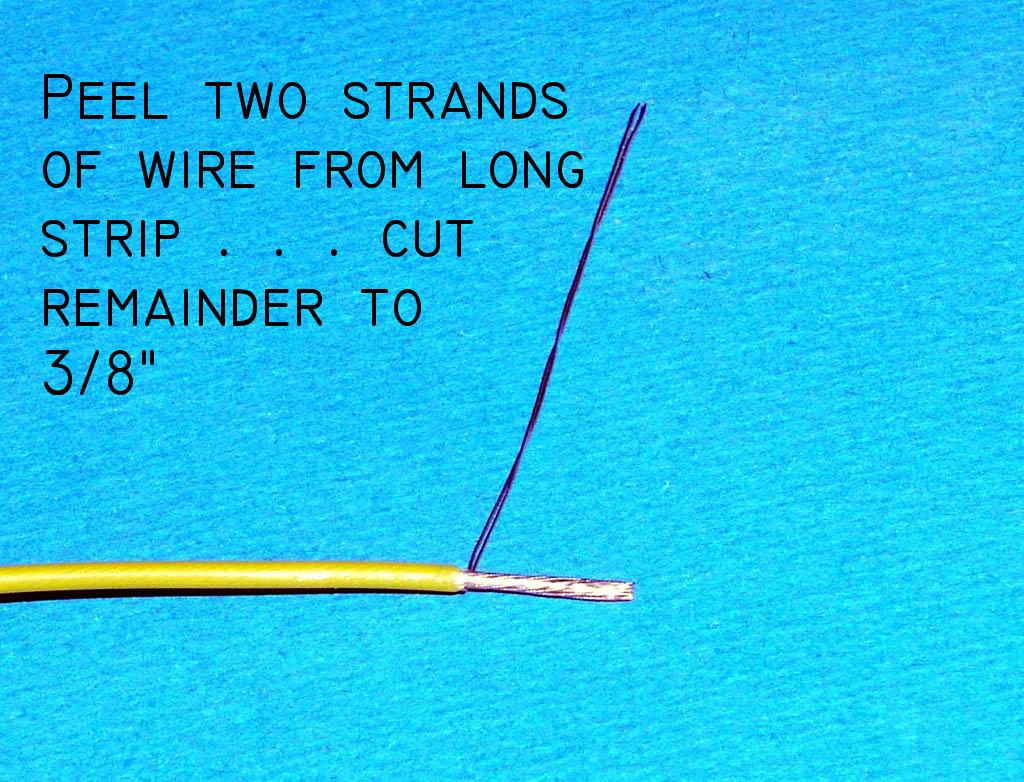
|
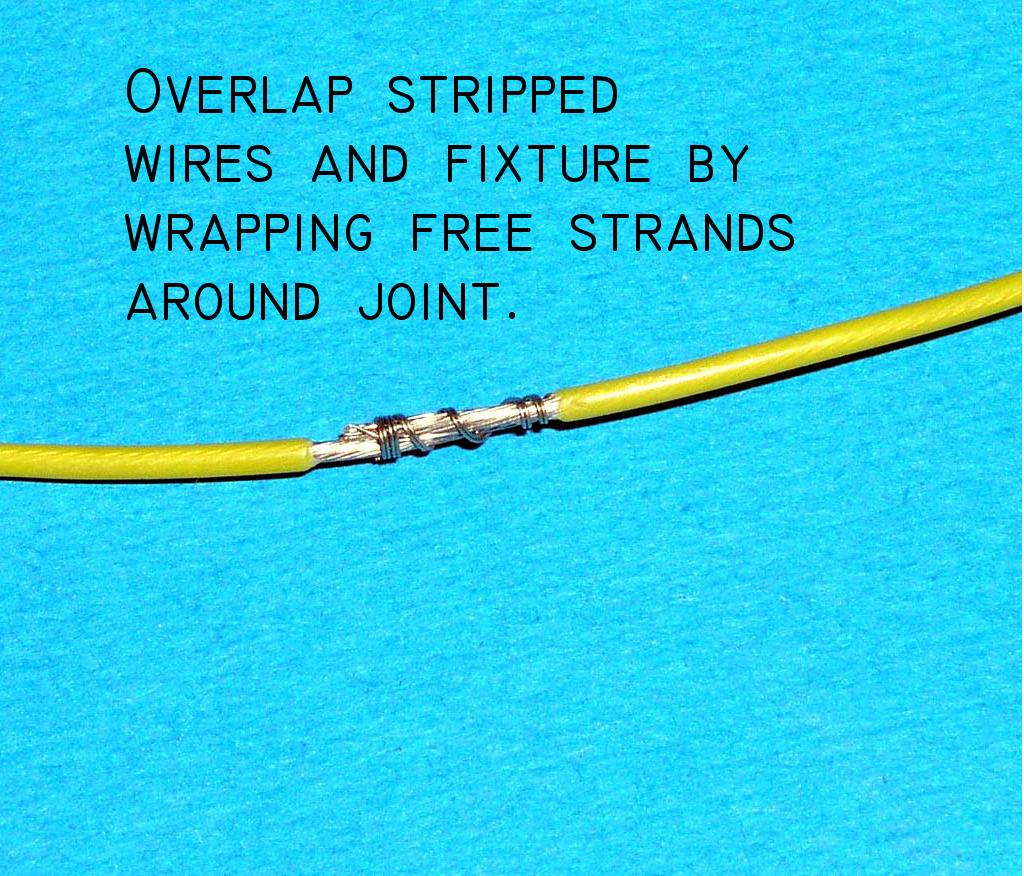
|
Step 3 . . .Overlap 3/8" segments to be joined and fixture for soldering by wrapping the joint with the long strands pulled out in step 2. |
Step 4 . . .Solder the joint . . . |
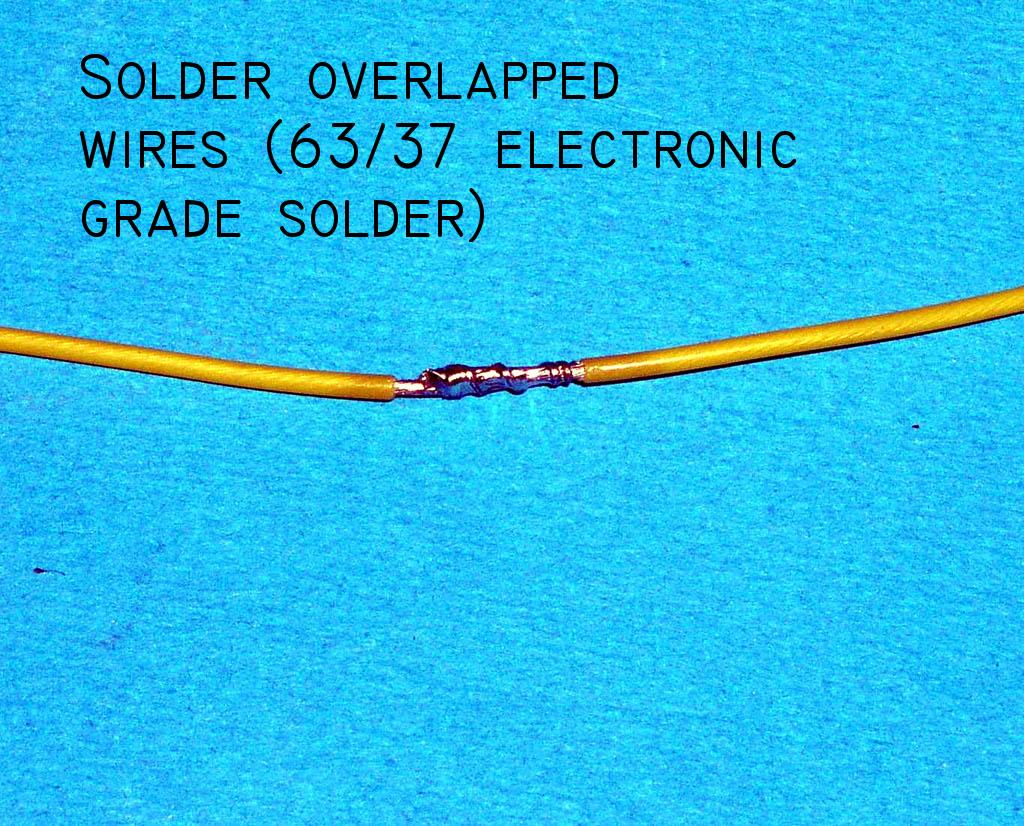
|
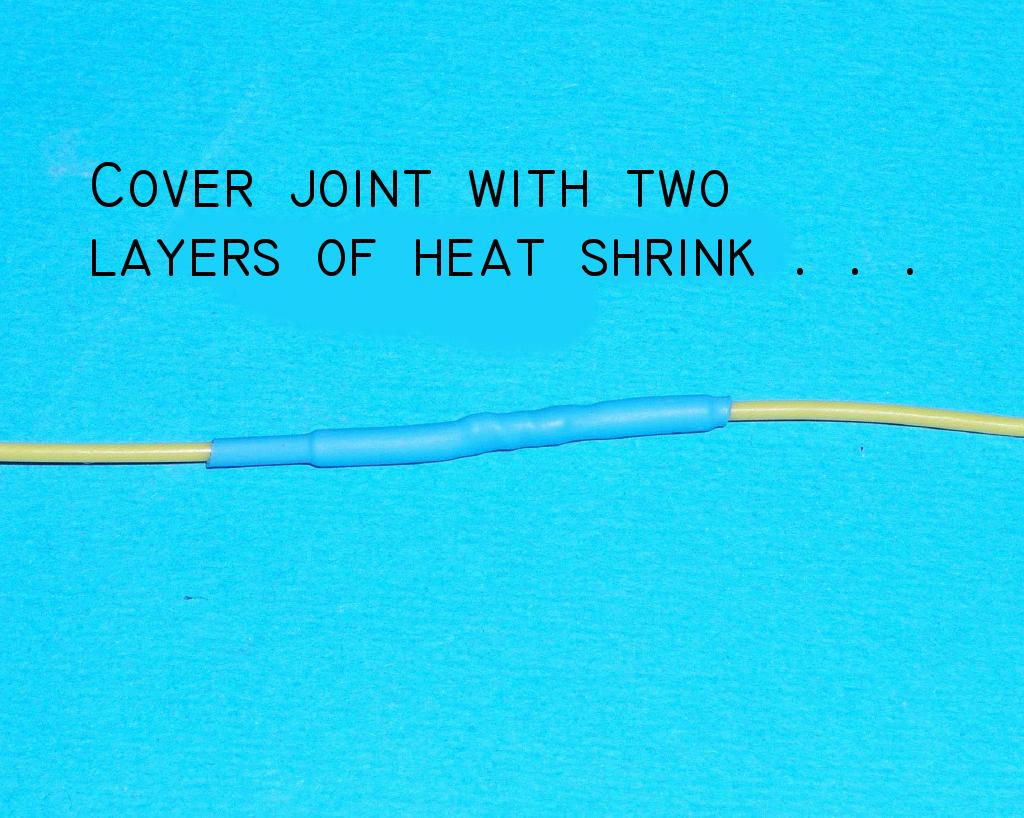
|
Step 5 . . .Install two layers of heatshrink over joint. Make the first piece about 1" long and center over joint. Make second piece 1-1/2" long and center over the first piece.
|
Step 6 . . .Here's the poor man's alternative stacked up next to the real thing. Frankly, the low-dollar alternative is easier to install. The self fixtured joint stays put while you solder it. The finished joint is easy to cover with heat shrink. The real solder sleeve is more difficult to install because you have to fixture the wires and then make sure the sleeve is centered on the joint while it's heated. With my heat gun, heat must be applied from both sides to get the solder to flow while being careful not to let alignment of the parts slip. I use solder sleeves 'cause they are small and look great when finished. Do-it-yerself lap soldered joints are easier to do, less expensive and offer performance that rivals a PIDG butt splice. |
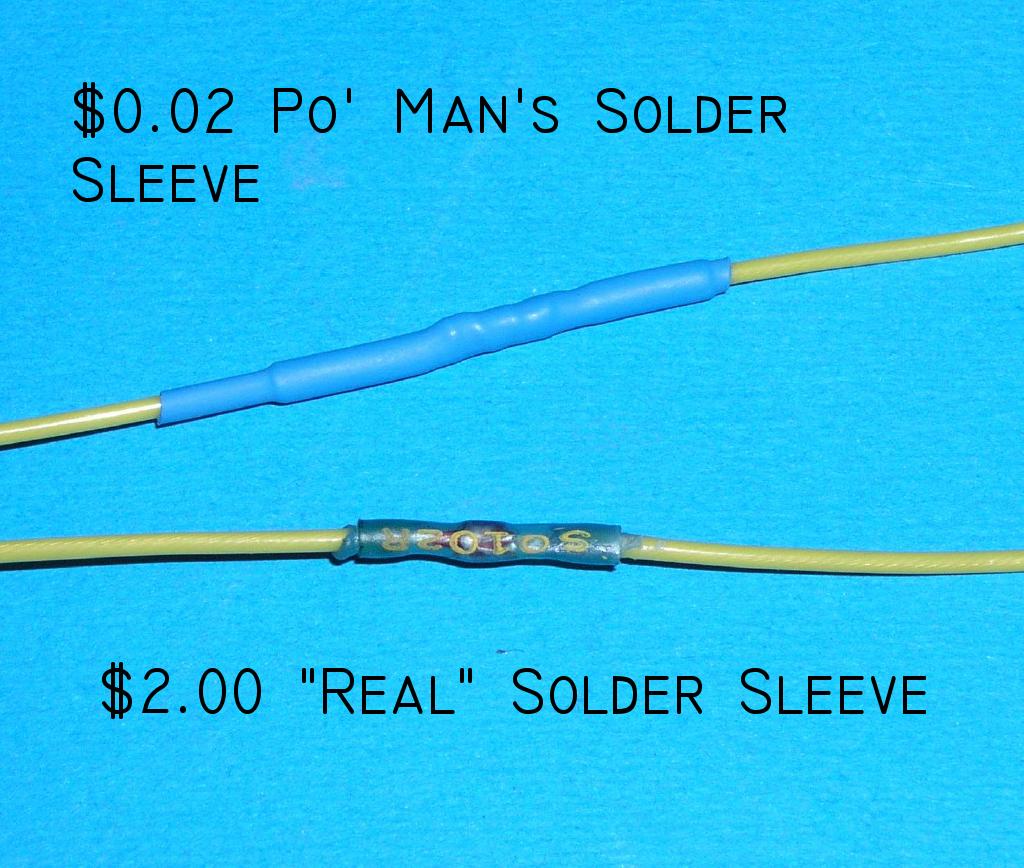
|